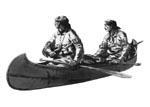

The
Bark Canoe Store
Shop Address:
15 East Sinto
Spokane, WA 99202
Mailing Address:
1111 West 10th Avenue
Spokane, WA 99204
(509)327-7902
(office voice & fax)
(509)327-1850 (shop)
barkcanoe@earthlink.net
www.barkcanoe.com
John Lindman
proprietor/builder
Copyright (c) 2009
All Rights Reserved
IN THIS ISSUE
1. News
- The Year End Wrap-up
2. Tech Tip
- Building Tip - Collecting and Processing Raw Pitch
The Latest News from The Bark Canoe Store
Despite the economy the first 6 months of 2009 were the busiest in our history (it is still busy). We were slammed. I loved it but it left very little time for much of anything else. The newsletters took the hit. I'll try to make up for lost time. Here's the update.Fiberglass Replicas Canoes - Infusion Bagging,
We now have infusion bagging going strong and I am pleased with the result. Our 16ft canoes, even with white ash thwarts and sitka spruce gunwales are coming in at 46lbs all trimmed out!
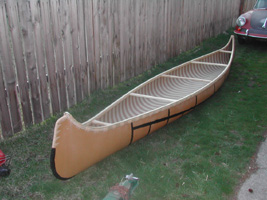

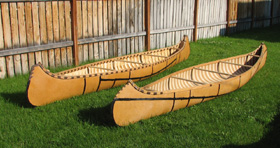
The canoe on the left has cedar ribs and sheathing and the other has infused core material ribs. The one with wood was 66lbs and the other was 46lbs.
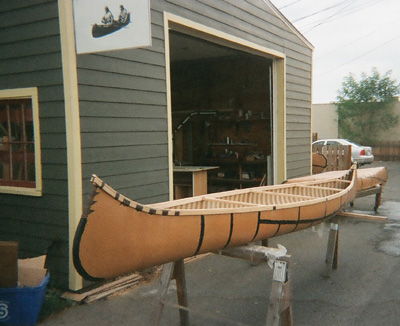
This is an 18' Abenaki model at 56lbs.
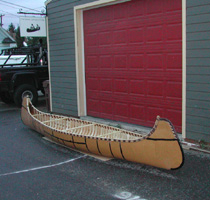
Shown is a 19ft "Last of the Mohicans" style canoe.
This allows us now to create 14ft canoes in the Old Algonquin style, 16ft in Ojibwe longnose and any style in 18ft.
If you want a glass hull, the paddling feel of a birchbark, and the interior look and smell of a birchbark canoe then perhaps the "hybrid" is a good fit for you.
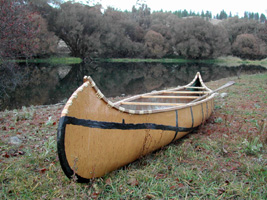
Fur Trade and War Canoes
Also we are set up to build 28ft fur trade and war canoes. These are hand laid up with a new type of knitted cloth that is extremely strong and a foam core material sandwiched in between. The result is a suprisingly light, super strong, durable and very authentic looking canoe that can be banged around by kids of any age. Recently we did a 34ft one for the Hudson River Quadricentenial in New York City. This one along with a 20ft birchbark Algonquin style war canoe led the flotilla from Battery Park near Wall Street and paddled up to Yonkers.
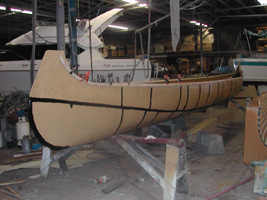
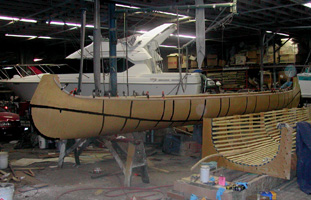
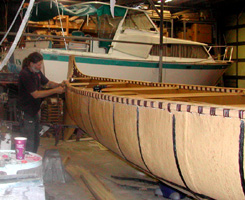
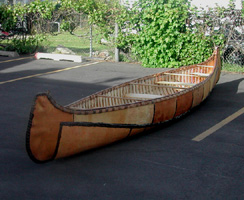
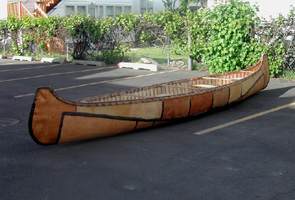
You can see it has seats, is designed for rough water
and the hull is a single sheet of bark.
We have expanded our space again. We can now build outside as well as inside. We do birch bark paneling inside the main building (as you can see below) using vacuum presses. This year we did projects for a new hotel in Montreal, a lake home in Georgian Bay, Ontario, another in White Fish, Montana, and others in Utah, Colorado, etc. This is now a major part of our business.
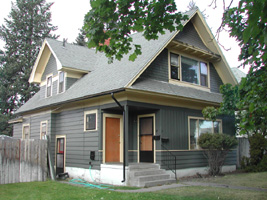
Tech Tip -
Building Tip - Collecting and Processing Raw Pitch
Pine rosin is getting more difficult to come by but don't let that stop you because it is so easy to collect and process your own pitch.Here in eastern Washington and northern Idaho there are lots of ponderosa pine trees. In other areas trees such as balsam fir, spruce, etc. will do the trick.
In some areas up here I can just go for a walk with a plastic bag and collect enough pitch for a canoe in a couple of hours. The other day with my students from the Advanced Class we filled a bag in less than an hour. I just use a hunting knife to pry the pitch from the tree. In most cases it is attached to bark but you will see that is no big deal.
Once you have collected a decent amount take a big coffee can or one of those big cans you can get from restaurants that vegatables, etc. come in. Take cheese cloth - you can get this at your grocery store (it costs about a buck) - and place it over the top of the can. Let is sag down into the can and then take a string and tie it tight.
Put the pitch in a fry pan, pot or some suitable container (best to have a handle). Heat it up until it is liquid. Slowly pour the pitch through the cheese cloth into the coffee can. The bark and debris will collect in the cheese cloth. You may want to squeeze the glob of pitch and bark that collects in the cheese cloth against the inner side of the can to get all of it out. Don't throw this glob out, just let it cool. You may want it for a torch :-)
The pitch will cool and will look just like pine rosin. Now all you have to do is mix it with fat and you are good to go. The best fat of course is bear grease, but you can use lard or even Crisco. If you aren't a bear hunter and want to make bear grease check with butchers that process wild game and set it up for them to save you the fat. It is technically illegal to sell bear parts but we are talking about a gift here. In an upcoming newsletter I will go over how to process that fat into bear grease. To figure out the correct ratio of fat to pitch go to the "Tips" section on the web site. This has been covered in earlier newsletters. Good luck!
-----------------------------------------------------------------------------------------
To remove yourself from this list, simply reply to this email with the word "REMOVE" in the subject.
------------------------------------------------------------------------------------------